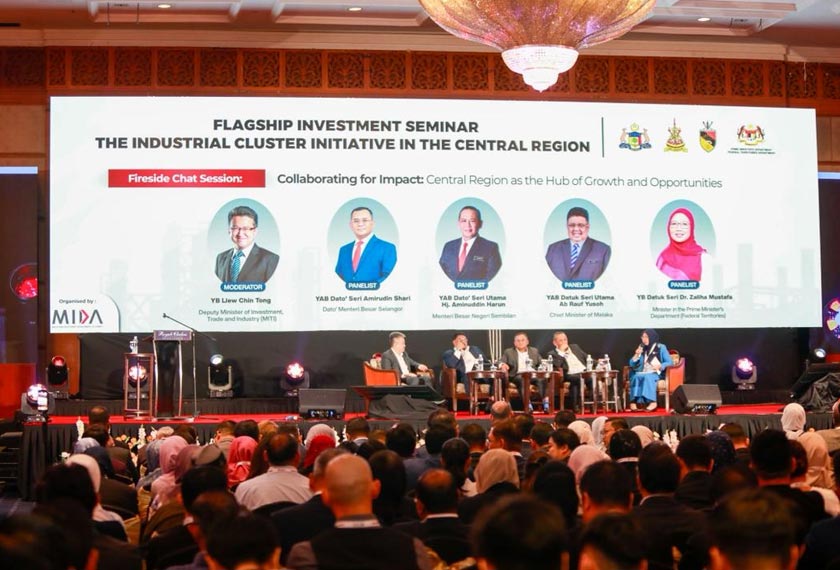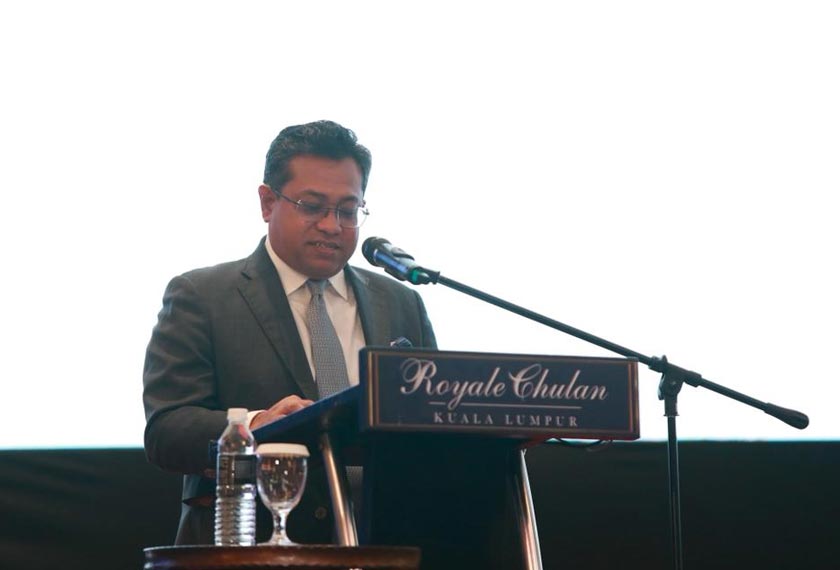Four States, One Strategy - How Malaysia is rewiring its Central Region for industrial competition

Key ministers and representatives from federal and state governments gather at the Flagship Investment Seminar on the Industrial Cluster initiative in the Central Region. - MIDA
KUALA LUMPUR: Malaysia’s growth story in the Central Region is one of collaboration and a partnership that bridges states, industries, and generations.
From strategic cooperation between the Malaysian Investment Development Authority (MIDA), the Department of Federal Territories, and the Investment Promotion Agencies of Selangor, Negeri Sembilan, and Melaka, to mentorship networks linking industry experts with students under the ScienceComm Challenge, this initiative demonstrates how unity drives impact.
By connecting policy with people and investment with innovation, Malaysia is shaping an ecosystem that positions the Central Region as a new engine of national economic growth.
“This isn't about competing state by state anymore,” said MIDA Chief Executive Officer Datuk Sikh Shamsul Ibrahim Sikh Abdul Majid.
He was referring to the “KL Metropolis concept”, which treats Kuala Lumpur, Selangor, Negeri Sembilan, and Melaka as a single integrated economic zone rather than competing jurisdictions.
THE CLUSTER LOGIC
The Central Region Industrial Cluster Development Initiative, aligned with Malaysia's New Industrial Master Plan 2030, targets four sectors including, Electrical and Electronics (E&E), Aerospace, Pharmaceuticals and Food Manufacturing.
Each state plays a distinct yet interconnected role within this ecosystem: Selangor continues to lead in high-technology manufacturing and E&E innovation; Negeri Sembilan is emerging as a hub for pharmaceutical excellence; Melaka is strengthening its global reputation in food manufacturing and precision industries; while Kuala Lumpur serves as the service and logistics backbone linking them all.
More than just an investment strategy, this cluster approach is designed to deliver tangible benefits to Malaysians.
The economic projections reflect this integration ambition, RM24.5 billion in additional annual GDP, RM12.5 billion in manufacturing investments yearly, and 5,000 skilled jobs created annually over the next five years.

A full house attends the Fireside chat featuring key ministers and industry leaders discussing the Central Region's role as a hub of growth and opportunities. - MIDA
SME INTEGRATION
A central focus of this initiative is empowering local Small and Medium Enterprises (SMEs). By integrating smaller players into the supply chains of multinational corporations operating within the region, MIDA aims to nurture a new generation of globally competitive local champions.
Sikh Shamsul Ibrahim said the challenge, acknowledged by industry participants at the programme, is that global corporations do not avoid local suppliers by choice, they import because local firms often cannot meet specifications, volumes, or quality consistency.
“Bridging that gap requires vendor development programmes, technical assistance, and capital access,” he added.
The stakes are substantial. When SMEs successfully integrate into multinational supply chains, they absorb technology, upgrade processes, and build capabilities that allow them to compete for other contracts, including exports.
This creates a multiplier effect, one upgraded supplier can service multiple MNCs, train its own workforce to higher standards, and eventually mentor other local firms.
However, that capability chain only works if Malaysia can produce the workforce those upgraded SMEs need which is why the Central Region programme extends beyond factory floors into classrooms.
THE LONG GAME: BUILDING HUMAN INFRASTRUCTURE
Recognising this, MIDA is extending its collaborative approach into education through the Malaysia Young Science Ambassador: ScienceComm Challenge (Central Region 2025).
Organised in partnership with the Ministry of Education (MOE) and supported by industry mentors, the programme encourages school students to creatively communicate science and technology concepts through digital storytelling. Beyond competition, it provides a genuine bridge between classrooms and careers exposing students directly to STEM professionals and high-value industries.
The initiative also aligns with MRI-3 under the Ministry of Higher Education (MOHE), which promotes the Triple Helix concept, a strategic collaboration between academia, research, and industry to produce globally competitive, highly skilled graduates.
“To the 15 schools, 45 students and teachers, and 15 industry mentors, congratulations. You have proven that the future of Malaysia’s innovation is in capable hands,” said Sikh Shamsul Ibrahim.

Sikh Shamsul Ibrahim delivers remarks at the Flagship Investment Seminar held at Royale Chulan, Kuala Lumpur. - MIDA
REGIONAL CONTEXT
Malaysia's approach comes as Southeast Asian nations intensify competition for manufacturing investment amid global supply chain restructuring.
The Central Region strategy offers what enables companies to move beyond basic assembly — established supplier networks, available technical talent, functional logistics infrastructure, and regulatory sophistication capable of supporting complex manufacturing processes.
Must-Watch Video
Cara lain mengikuti berita kami


